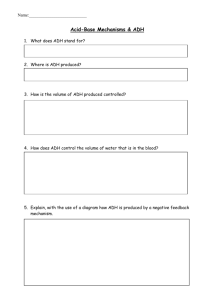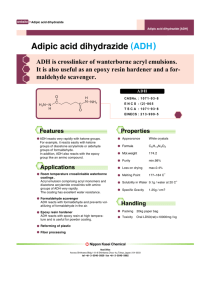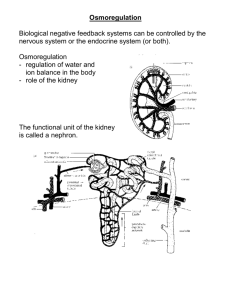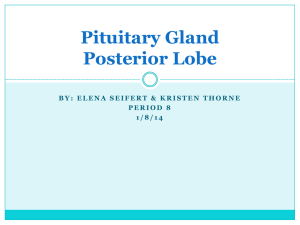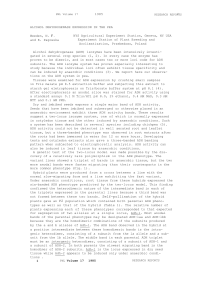Life cycle of a fly
advertisement
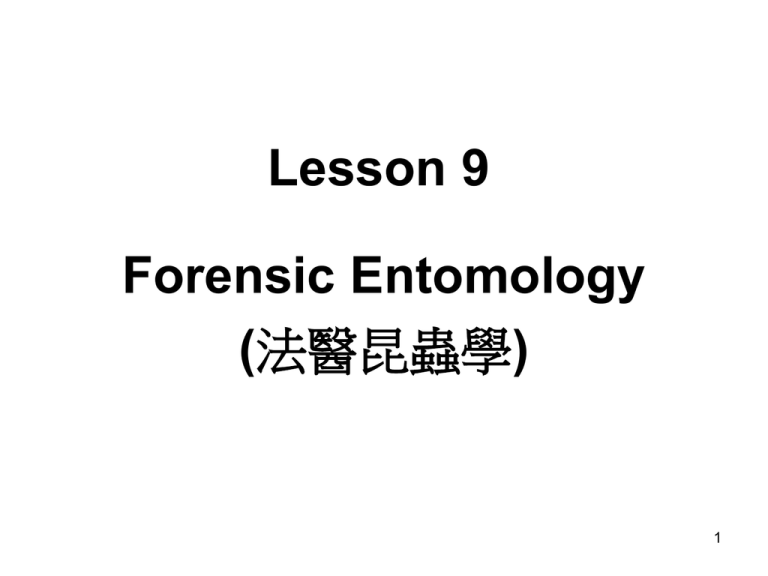
Lesson 9 Forensic Entomology (法醫昆蟲學) 1 Activity 9.1 Introduction of Forensic Entomology • Introduction of Forensic Entomology (http://www.nhm.ac.uk/nature-online/naturelive/video-archive/videos/forensicentomology/ )(an on-line video by Martin Hall of Natural History Museum of London) (suggested episode for video watching: 00:00 - 16:27)) 2 Taxonomy of insects • • • • • • • Kingdom (界) Phylum (門) Class (綱) Order (目) Family (科) Genus(種) Species(屬) Animalia (動物界) Arthopoda (節肢動物門) Insecta (昆蟲綱) X, Y, Z … A, B, C, … D, E, F, … G, H, I, … 3 Taxonomy of True Flies • • • • • Kingdom (界) Animalia (動物界) Phylum (門) Arthopoda (節肢動物門) Class (綱) Insecta (昆蟲綱) Order (目) Diptera (雙翅目) Family (科) Calliphoridae (Blow Flies) Sarcophagidae (Flesh Flies) … • Genus(種) … • Species(屬) … 4 True Flies of Hong Kong 5 Genus name Species name 亞麻蠅 House Fly (Parasarcophage sp.) Source: Hong Kong Insects (2007) (Friends of the Country Parks & Cosmos Books Ltd) 6 Genus name Species name 金蠅 Blow Fly (Chrysomya sp.) Source: Hong Kong Insects (2007) Source: Hong Kong Insects (2007) (Friends of the Country Parks & Cosmos Books Ltd) 7 Genus name Species name 南亞寡鬃實蠅 Pumpkin Fruit Fly (Bactrocera tau) Source: Hong Kong Insects (2007) (Friends of the Country Parks & Cosmos Books Ltd) 8 Chrysomya megacephala (紅頭麗蠅) (Bluebottle) Source: http://www.padil.gov.au (Pests and Diseases Image Library) 9 Chrysomya megacephala (Found in HK) • • • • Order (目) Family (科) Genus(種) Species(屬) Diptera (雙翅目) Calliphoridae Chrysomya megacephala 10 NOT TO SCALE Pupa 6-10 mm Larva 3rd instar 10-15 mm Life Cycle of a Blow Fly (Complete Metamorphosis) 2nd instar 5-8 mm 1st instar 2-4 mm Source: http://www.forensicentomologist.org/ Egg 2-3 mm Adult 11 A maggot (larval stage) Posterior blunt part (spiracles for breathing) Anterior pointed part (mouth for eating) Two spiracles (each with 3 slits) 3rd instar Remarks: 1st instar 1 slit within each spiracle 2nd instar 2 slits within each spiracle 3rd instar 3 slits within each spiracle 12 The puparial case is usually oval in shape and changes colour over time. The colour of the puparial case of different blow fly species varies. 13 Forensic Entomology Kit Source: http://store.sirchie.com/Search.aspx?k=Forensic+entomology+kit (SIRCHIE) 14 PMI (Post Mortem Interval) • PMI – the time elapsed since death • PMI usually correlates with the age of the oldest immature blow fly stage developing on the corpse. • Depending on the species of the blow flies and the environment such as ambient air temperature the development of the blow flies may take several weeks or months. 15 • A dead body is a rich source for carrion animals which include insects and other arthropods such as beetles. 16 Effect of temperature on the rate of development of insects Insects (e.g. blow flies) are cold-blooded animals and their level of activity including the growth rate depends on the temperature of the surrounding environment. Insects require a certain amount of heat energy to develop from one stage in their life cycle to another stage. The heat energy is required for the enzymecontrolled biochemical reactions of insects 17 Effect of temperature on the rate of development of insects For flies to develop the temperature must remain between a minimum temperature (minimum developmental threshold) and a maximum temperature (upper developmental threshold) for a certain amount of time The minimum threshold temperature for many fly species = 10oC (generally 6oC to 10oC) On either side of the minimum threshold temperature the insect will not develop or the rate of development will decrease 18 • It is found that rate of development of insects is directly proportional to temperature • The higher the temp., the less time needed for the development of insects 19 20 Accumulated Degree Hours/Days ADH / ADD • Accumulated Heat [a combination of temperature above the minimum developmental threshold multiplied by time] is measured as physiological time (“physiological energy budget”), in units called degree-days (o D) or degree-hours (ohr) • ADH = (T-Tmin)oC X time (in hr) • ADD = (T-Tmin)oC X time (in day) 21 • Each insect species requires a certain number of degree-days / degree-hours to complete its life cycle • The amount of heat energy required for the development of a specific insect species is constant (i.e. the ADD / ADH for development is specific for a certain insect species) • The ADH for the blow fly Phormia regina and Sarcophaga bullata are 5160 ADH and 8317 ADH respectively 22 • As the temperature increases or decreases, the chemical reactions governing the growth of an insect (blow fly) increase or decrease correspondingly. • However, the total amount of ADH for a blow fly to reach a specific growth stage is the same whether it happens quickly at higher temperature or slowly at lower temperature. 23 • For instance, the total ADH for the blow fly Phormia regina to develop from the egg stage to the end of 1st instar = 567.8 ADH • If the eggs of the blow fly are reared at 26.7oC, it will take 34 hours for the eggs to develop into the beginning of 2nd instar. ADH of the development =34(hr)X(26.7-10) oC = 567.8 ADH 24 • If the eggs of the blow fly Phormia regina are reared at a lower temperature, 20oC, the fly will need more time to develop from the egg stage to the beginning of 2nd instar. (20-10)oC x Y hrs = 567.8 ADH Y = 56.78 25 Reference for the Derivation of ADD/ADH • Gennard, D.E. (2007). Forensic Entomology: An Introduction. UK: John Wiley & Sons Ltd. 26 Activity 9.2 Simple Calculation of ADD (Quiz 1) 1. Using the data below calculate the ADD of a fly species for day 1 and 2. Minimum threshold temperature = 10oC Average temperature of day 1 = 12oC Average temperature of day 2 = 14oC 2. Calculate the total ADD for the two days. 27 Quiz 1 (Solution) 1. Day 1: ADD = (12-10) (degree) x 1 (day) = 2 degree-days Day 2: ADD = (14-10) (degree) x 1 (day) = 4 degree-days 28 2. Total ADD = 2+4 = 6 (degree-days) Remarks: Temperature usually fluctuates within a day. Hence, the mean (average) temperature is taken for a day. 29 Activity 9.2 (Quiz 2) Application of ADH to infer PMI • A corpse was discovered at 10:00 am, 25 September 2009. • Maggots of Phormia regina, a blow fly species (at the beginning stage of 2nd instar), were present and collected by the forensic. entomologist at 11:00 am, 25 September 2009 • It takes 34 hours (26.7oC) to rear Phormia regina from the egg stage to the beginning of 2nd instar in the laboratory. 30 Average Temp. on 25, 24, 23, 22 Sept. 2009 were 20oC, 21oC, 22oC, 18oC respectively. Estimate the Post Mortem Interval of the dead body (i.e. When did the blow fly first arrive at the scene?). 31 Quiz 2 (Solution) Working backwards: • Total ADH from egg stage to beginning stage of 2nd instar of the fly = 34 hrs x (26.7-10) oC = 567.8 ADH • For 25 Sept. 2009 (0:00 am – 11:00 am) ADH = 11 (hr) x (20-10) oC = 110 ADH • For 24 Sept. 2009 (0:00 am – 12:00 midnight) ADH = 24 (hr) x (21-10) oC=264 ADH 32 • Total ADH for 25 & 24 Sept. 2009 = 110 + 264 ADH = 374 ADH Therefore, there were 567.8 – 374 ADH (i.e. 193.8 ADH) contributed from days before 24 Sept 2009 Let Y be the time interval between the time the fly laid eggs on the corpse and midnight (24:00) of 23 Sept 2009. (22-10) oC x Y (hr) = 193.8 ADH Y = 16.15 (approx. 16) The fly laid eggs on the corpse around 8 am (24-16=8) on 23 Sept. 2009 33 • The PMI of the dead is around 8 am on 23 September 2009. 34 Basic Assumptions in using ADH to calculate PMI • Blow flies will lay eggs on the corpse as soon as they discover the dead body. • Weather conditions (e.g. temperature) recorded at a site distant from the crime scene reflect the conditions at the crime scene. • Surrounding air temperatures are the major factors affecting the rate of the development of the blow flies. 35 Why do forensic entomologists need to collect and rear blow flies? • A forensic entomologist will collect several specimens of blow fly species found at the crime scene for later identification at a laboratory because the larvae of many blow flies look much alike. • The larvae will be raised in a temperaturecontrolled chamber until the flies emerged as adults (for the exact species identification) 36 Many factors other than temp. may affect development of blow flies: • Buried bodies • Bodies found in enclosed spaces (e.g. a room, a wardrobe) • Bodies exposed to sun • Bodies in water • Bodies in a car • Bodies wrapped with a carpet, etc. 37 • Seasons • Urban vs rural scenes 38 Activity 9.3 Application of Forensic Entomology to find the PMI in a Crime Case Case Introduction • A woman’s body (Miss Diana Wong) was found in a bush at noon on 13th October 2009. Dr. Andy Tse, a Government forensic entomologist was called by the police to help investigate the crime. Dr. Tse arrived at the crime scene at 1 pm that day and his task was to determine the time since death (PMI, Post Mortem Interval) of the victim. 39 At the Crime Scene 1. Dr. Tse collected some adult blow flies flying over the corpse by a hand net and placed them in a small bottle containing 70% alcohol. 2. He measured the air temperature (=270C). 3. He also found that there were some large maggots on the corpse. He then collected 2 dozen large maggots and put them in a clean bottle. 40 4. He also found some pupae from the clothes of the victim and collected the pupae in another bottle. 5. He took some soil from underneath the corpse. 6. He noted that the crime scene was wet and shady. 7. Finally, he left a small weather station at the crime scene to collect the weather data (max. and min. temperature) for the next 7 days. 41 At the laboratory 1. The adult blow flies caught at the crime scene were examined and it was found that all of blow flies belonged to the species Chrysomya megacephala. 2. The adult flies were preserved in 70% alcohol. 3. Most of the maggots collected were identified visually as 3rd instar maggots. 42 4. One dozen of the maggots (larvae stage) were killed in hot water and then transferred to 70% alcohol for identification of species. 5. The other dozen of maggots (larvae stage) were reared at 270C and allowed to develop and hatch. 6. No empty pupae cases found. 7. All collected pupae were also reared at 270C and allowed to develop and hatch. 8. Remarks: The number of pupae found from the corpse was smaller than that of the maggots. 43 Case Note • The lower development threshold was considered to be 100C for all species of blow flies. • On 19th Oct 2009 Dr. Tse collected the data from the weather station left at the crime scene. He entered the maximum and minimum temperatures into Table 1a &1b for the period 13-19 Oct 2009. 44 • The meteorological information (maximum and minimum temperatures) in Oct 2009 was obtained from the local observatory department and the corresponding maximum and minimum temperatures were also entered in Table 1a & 1b. 45 Table 1a Lucilia sericata ADH of the 13 hours (13th Oct., 00:00 -13:00) 46 Table 1b Chrysomya megacephala ADH of the 13 hours (13th Oct., 00:00 -13:00) 47 Table 2 The day and time of adult fly emergences from the larvae and pupae being reared in the laboratory at 270C. Maggots reared in the laboratory since 13th Oct 2009 Day and Time of Adult Emergences Number Species of blow flies Collected as pupae 21st Oct 2009 (13:00) 12 Lucilia sericata Collected as larvae (3rd late instar) 29th Oct 2009 (03:21) 12 Chrysomya megacephala 48 Table 3 Developmental data for a blowfly (Chrysomya megacephala) at 270C Threshold Minimum Temperature: 100C Stage Development Time (h) ADH Egg hatch 18 306 1st instar-2nd instar 30 510 2nd instar-3rd instar 72 1224 Late 3rd instar 144 2448 Pupation – adult emergence 234 3978 Source: J. D. Wells, H. Kurahashi. Chrysomya megacephala (Fabricius)(Diptera: Callipohoridae) development: rate, variation and implications for forensic entomology, Japanese Journal of Sanitary Zoology, 45(4):303-309. 49 Table 4 Developmental data for a blowfly (Lucilia sericata) at 270C Threshold Minimum Temperature: 100C Stage Development Time (h) ADH Egg hatch 11.8 200 1st instar-2nd instar 20 340 2nd instar-3rd instar 20 340 Late 3rd instar 17.1 290 Pupation – adult emergence 259 4400 Total ADH (egg adult fly) (5570) 50 Task 1 • Using the provided information of the crime case and the additional information from Tables 1a, 1b, 2,3 and 4 calculate the PMI (Post Mortem Interval) of the victim (i.e. when did Miss Diana Wong die?) according to the data from Lucilia sericata. 51 Task 2 • Using the provided information of the crime case and the additional information from Tables 1-4 calculate the PMI (Post Mortem Interval) of the victim (i.e. when did Miss Diana Wong die?) according to the data from Chrysomya megacephala. 52 Task 1 (Solution) Lucilia sericata •(i) What is the total ADH for the development (from egg to adult fly)? Ans.: 200+340+340+290+4400 = 5570 (ADH) •(ii) How many days did the collected pupae need for its development in the laboratory until adult emergence? Ans.: 8 days (The time gap between 13th Oct 2009 (1 pm) and 21st Oct 2009 (1pm)) 53 (iii) Calculate the ADH of the pupation in the laboratory. Ans.: 8 (days) X 24 (hours) X (27-10) (oC) = 3264 ADH 54 (iv) How many ADH would account for the pupation in the wild? Ans.: •From Table 4 the ADH for pupation = 4400 ADH, hence the ADH for pupation in the wild = 4400 – 3264 = 1136 ADH 55 (v) Calculate the date of the egg deposition. Answer: From Table 4 the ADH required for the development from egg to end of larval stage = 200+340+340+290 ADH = 1170 ADH 56 Checking Table 1a and add the ADH backward from 13th , 12th, 11th, 10th, 9th, etc such that the sum of ADH just exceeds 1136 + 1170 = 2306 ADH 57 • Sum of ADH from Oct 13, 1 pm to 7th Oct (00:00) = 2231.5 ADH • Sum of ADH from Oct 13, 1 pm to 6th Oct (00:00) = 2657.5 ADH > 2306 ADH • y/24 x 426 ADH + 2231.5 ADH = 2306 ADH • y= 4.20 • The fly deposited the eggs on 6th Oct 2009 (19:48)(using the data 24 - 4.20)) 58 Lucilia sericata 59 (vi) When did Ms Dianna Wong die? • Ms Diana Wong died on 6th Oct 2009 (19:48) (i.e. 8 pm). 60 Task 2 (Solution) Chrysomya megacephala (i) What is the total ADH for the development (from egg to adult fly)? (See Table 3) Ans.: 306+510+1224+2448+3978= 8466 (ADH) (ii) How many hours did the collected larvae (at 3rd late instar) need for the pupation stage before emergence as adults in the laboratory? (See Table 2 for the time gap between 13th Oct 2009 (1 pm) and 29th Oct 2009 (3:21) ) 61 • Answer: 15 x 24 + 14 + 21/60 = 374.35 hours 62 (iii) Calculate the ADH required for the stage of pupation (3rd instar) and emergence as adults in the laboratory. 63 Answer: ADH required for the stage of pupation (3rd instar) and emergence as adults in the laboratory = 374.35 (hours) x (27-10) (oC) = 6364 ADH 64 (iv) Calculate the ADH of the egg and larvae (1st and 2nd instar) in the wild. Answer: 8466 ADH – 6364 ADH = 2102 ADH 65 (v) What is the date of egg deposition (Chrysomya megacephala) on the corpse? 66 Answer: Checking Table 1b the date of egg deposition can be found by adding the ADH in the wild (13th, 12th, 11th, 10th, 9th of Oct, etc.) and comparing the sum of the ADH with 2102 ADH Calculation of ADH from 13th Oct (13:00) to 7th Oct 388.8 x (y)/24 + (352.8+357.6+313.2+302.4+297.6+219.05) ADH = 2102ADH y = 16 Chrysomya megacephala laid eggs on the corpse on 7th Oct (08:00)) 67 Calculation of ADH from 13th Oct. (13:00) to 7th Oct. (08:00): 388.8 x (y)/24 + (352.8 + 357.6 + 313.2 + 302.4 + 297.6 + 219.05) ADH = 2102 ADH y =16 (i.e. Chrysomya megacephala laid eggs on the corpse on 7th Oct. (08:00) 68 • (vi) When did Ms Dianna Wong die? Answer: 7th Oct 2009 (8 am). 69 Activity 9.4 Discussion Questions 1. What factors would affect the reliability of the above methods used to calculate PMI? 70 Answer: Environmental factors • Seasonal changes • Daily temperatures • Sun exposure • Dead body inside or outside a building • Dead body immersed in water or not • Dead body in urban area or in rural area • Dead body buried or not • Dead body wrapped inside a blanket 71 Discussion Questions 2. Do the PMI results calculated from the 2 different species of insects, Lucilia sericata and Chrysomya megacephala support the estimated PMI of the victim? • [Hint: Lucilia sericata is called a primary blow fly since it will first lay eggs onto a dead body within 4 hours of a person dying. Chrysomya megacephala is called a secondary blow fly since it will lay eggs onto a dead body within 4 days of a person 72 dying.] Answer: • The estimated PMIs from Task 1 (6th Oct 2009 (8 pm)) and Task 2 (7th Oct 2009 (8 am)) are reasonable and hence the final estimated PMI of the victim should be 6th Oct 2009 (8 pm). 73 Discussion Questions 3. What is the purpose of using two species of insects, Lucilia sericata and Chrysomya megacephala to calculate the PMI of the victim (i.e. Can we use just one species of the insects to calculate the PMI)? 74 Answer: • We use the data of the two species of insects to calculate the estimated PMI because the two PMIs calculated from the two species of insects can provide us with counter-check of the real PMI. If the PMI calculated from the secondary blow fly is greater than that from the primary blow fly, the estimated PMIs are not reasonable and something might have gone wrong in the data collection, methodology and /or calculation involved in the forensic investigation. 75 Remarks: The suggested solutions of Activity 9.3 were calculated by reference to the methods illustrated in ASISTM Forensic Investigations: Forensic Entomology (Centre for Learning Technology, Faculty of Life & Physical Science, The University of Western Australia): http://www.clt.uwa.edu.au/projects/asistm/for ensic_investigations/forensic_entomology 76
